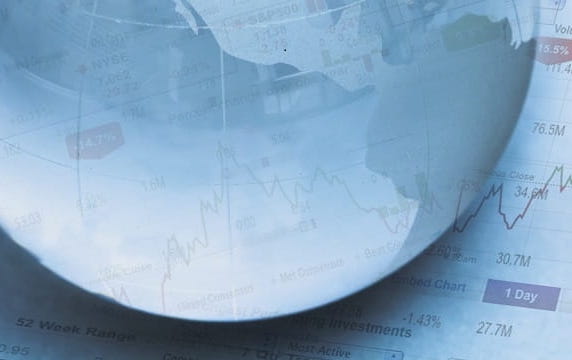by Larry Adam, Chief Investment Strategist, Raymond James
Markets this month were unable to build upon January's momentum following speculation that the central bank will continue with interest rate hikes.
In other contexts, a string of positive economic data, including reports on jobs and retail sales, would provide a tailwind for equities. In these inflationary times, however, the specter of the Federal Reserve’s (the Fed) commitment to cooling the economy via higher interest rates has made any good news suspect.
The major stock market indices reflected this tension until a key measure of inflation provided the bad-enough news needed to seemingly convince the market that the Fed will continue toward a higher interest rate regimen. Thus February’s hopes of building on January’s gains ended, and the S&P 500 closed 2.61% down for the month.
“While the Fed probably still has some more work to do, we continue to believe that the end of the tightening cycle is near,” said Raymond James Chief Investment Officer Larry Adam. “We would also note that the continued and recent strength in the economic data mitigates the intensity of the expected recession.”
Let’s review our year-to-date numbers and get to the details.
| 12/31/22 Close | 2/28/23 Close* | Change Year to Date |
Gain/Loss Year to Date |
|
| DJIA | 33,147.25 | 32,656.70 | -490.55 | -1.48% |
| NASDAQ | 10,466.48 | 11,455.54 | 989.06 | +9.45% |
| S&P 500 | 3,839.50 | 3,970.15 | 130.65 | +3.40% |
| MSCI EAFE | 1,943.93 | 2,056.90 | 112.97 | +5.81% |
| Russell 2000 | 1,761.25 | 1,897.00 | 135.75 | +7.71% |
| Bloomberg U.S. Aggregate Bond Index |
2,048.73 | 2,055.81 | 7.08 | +0.35% |
*Performance reflects index values as of market close on Feb. 28, 2023. MSCI EAFE and Bloomberg Aggregate Bond reflect Feb. 27 closing values.
Balloons and semiconductors
Tensions between the United States and China remain high, strained additionally with the discovery of what U.S. officials described as a Chinese spy balloon floating over the United States. Further, the United States has made moves to curtail the growth of China’s domestic advanced technology sector by signing agreements with the Netherlands and Japan to restrict the export of advanced semiconductors.
Unraveling the Russian energy knot
February brought additional evidence that Europe is successfully detangling itself from Russian natural gas, which had once been seen as one of the Kremlin’s most important geopolitical trump cards. By the end of the month, prices fell to 18-month lows, meaning Europe has found a way forward with almost no Russian gas supply. Increased imports from the United States and Qatar, adaptations in the industrial sector and the expansion of renewable energy have enabled Europe to fill the gap.
Treasury yields rise
Bond yields reversed course as the stronger-than-expected economic data caused the market to remove rate cuts priced in the second half of the year, driving the 10-year Treasury yield back toward 4%. The two-year Treasury yield is also up to 4.81%, a new cycle high.
Debt ceiling talks continue
As the U.S. Treasury continues its “extraordinary measures” to keep paying the nation’s debts, legislative and executive leaders continue to negotiate a resolution to the debt limit debate. Typically, one wouldn’t expect a full resolution until nearer the point the Treasury runs out of runway, which may be as early as July.
The bottom line
A technical analysis of the equity markets shows characteristics of a market attempting to recover from bear conditions. Still, inflation and the response to it will likely remain the dominant market mover, and a lack of clarity will drive volatility. Short-term, expect this uncertainty to continue, but in the long view, it’s worth noting that the economy here and globally has shown remarkable resilience.
If you have any questions, please do not hesitate to reach out to your financial advisor.
Investing involves risk, and investors may incur a profit or a loss. All expressions of opinion reflect the judgment of the authors and are subject to change. There is no assurance the trends mentioned will continue or that the forecasts discussed will be realized. Past performance may not be indicative of future results. Economic and market conditions are subject to change. The Dow Jones Industrial Average is an unmanaged index of 30 widely held stocks. The NASDAQ Composite Index is an unmanaged index of all common stocks listed on the NASDAQ National Stock Market. The S&P 500 is an unmanaged index of 500 widely held stocks. The MSCI EAFE (Europe, Australasia and Far East) index is an unmanaged index that is generally considered representative of the international stock market. The Russell 2000 is an unmanaged index of small-cap securities. The Bloomberg Barclays US Aggregate Bond Index is a broad-based flagship benchmark that measures the investment grade, U.S. dollar-denominated, fixed-rate taxable bond market. An investment cannot be made in these indexes. The performance mentioned does not include fees and charges, which would reduce an investor’s returns. Investing in the energy sector involves special risks, including the potential adverse effects of state and federal regulation, and may not be suitable for all investors. Investing in commodities is generally considered speculative because of the significant potential for investment loss. Their markets are likely to be volatile and there may be sharp price fluctuations even during periods when prices overall are rising. International investing involves special risks, including currency fluctuations, differing financial accounting standards, and possible political and economic volatility.
















